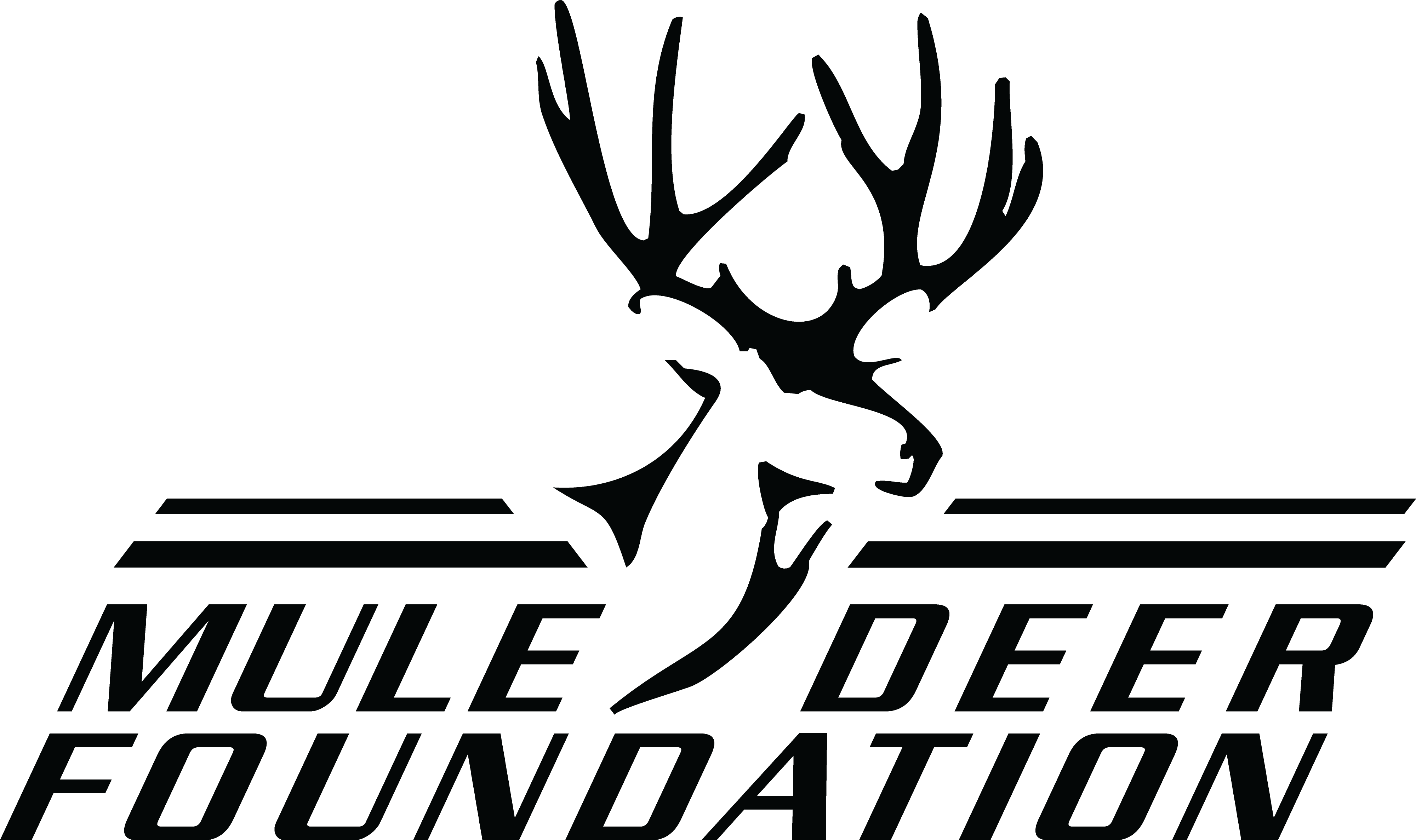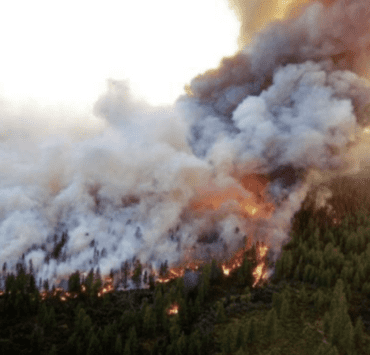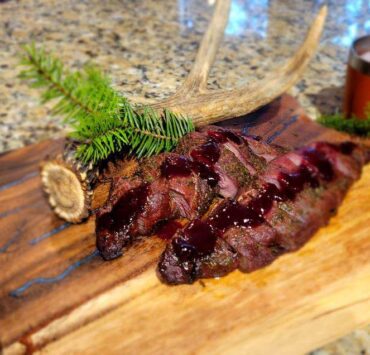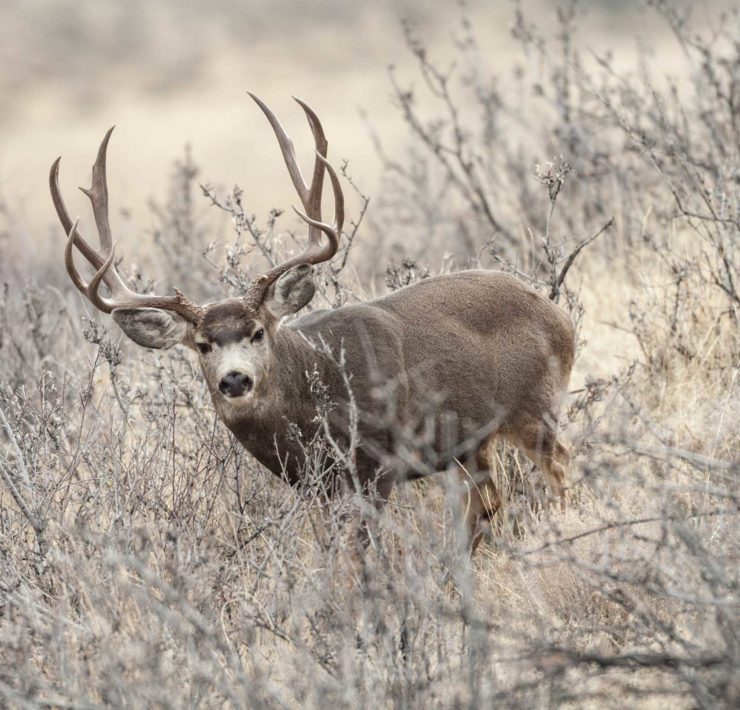“New Non-Resident western hunter? Look No Further”

All you need to know about western hunting for the non-resident hunter.
I Just Drew a Tag, Now What?
Congratulations, you’ve just drawn a mule deer tag. You listened to your buddies or watched a YouTube video to understand the drawing process, and it all worked out in your favor. Now reality is starting to set in, and you realize that you will have to pack up your truck and drive across the country to chase an animal you’ve only ever seen on TV. That can be daunting, but the Mule Deer Foundation is here to help. We will walk you through the various phases of planning for an out-of-state hunt and give you our best advice, including some examples of past successes and failures. So, without further delay, here we go.
Non-Resident Hunters Planning Phase:
The planning phase is the first step once you know you’ve drawn a tag. This is the part of your trip where you spend more time in front of a computer, looking at satellite maps and reports than you thought ever existed. One of the mistakes I have made in the past was buying hundreds of dollars of paper maps of the hunt area I had just drawn a tag in. Now, you could make the excuse that that was probably a long time ago, and all there was was paper maps, so that seems valid. Unfortunately, it wasn’t long ago and Google Earth and OnX existed. I just didn’t give in to the hype and wanted to use paper.
My first tip is to buy yourself a subscription to OnX. It is the best money you will spend as an out-of-state hunter.
Admittedly, I am an over-planner. Due to my career history I plan primary, secondary, and tertiary options for any scenario that I may encounter. I know where I can land a helicopter, where the aircraft is going to take me to the hospital. I know the quickest foot evacuation, and what would happen in the event of a rock slide or a flood. These things are important to me because I have needed them in the past. I know all of those things because I spent hours studying the map; I’m looking at elevation, water, sources, photography, vegetation, and especially looking for likely areas that will hold critters.
What areas will likely hold critters? You ask.
That’s a great question. It will entirely depend on the critter, but since this is the Mule Deer Foundation, let’s focus on mule deer. You can find a lot of information in reports on your specific zone written by other hunters. I recommend the rok slide forum, but you can search area 127 B in Arizona, and someone from somewhere has hunted it and has written something about the area.
You know you are getting close to the end of the planning phase when you can draw a map of your hunt area by hand, you know where you’re going to park the truck, you know where you’re going to camp at night, and you know four or five different ways you could take to get back to the truck if you need to. The mapping tool is great because it allows you to mark these on GPS, it’s going to work whether or not you have service. In the worst-case scenario, you can send all those pins to your friend or your loved one to let them know where you are or will be, at any given time.
So to reiterate: Step 1 = Planning phase:
- Memorize hunt area
- Map
- Vegetation
- Trees for cover
- Shrubs critters use for food
- Where to park
- Three different options with multiple routes to and from the area
- Where to camp
- Three different options based on weather, terrain, and where you find animals
- Emergency management
- Closest Hospital
- How to get to the hospital
- Where will you have cell service
- What emergency distress beacon could you use?
- Research Hunt Area’s past experiences:
- Research other hunters’ experiences in your unit on the Rokslide forum: https://www.rokslide.com/
- Like any forum, Rockslide has pros and cons, but if you dig deep enough, you can find nuggets of information on almost any hunting unit in the United States.
- GoHunt: https://gohunt.com/?tw_source=google&tw_adid=688251328921&tw_campaign=20956391750&gad_source=1&gbraid=0AAAAAoQc7MnHUJHXs1rSlD5wd94XT8MdY&gclid=Cj0KCQjwmt24BhDPARIsAJFYKk0fKNdqCw0M2CkNLyuByiS1j3fMsFIq4IiYE0poKVL8CbT9yM1edVEaAvxBEALw_wcB
- Go Hunt is an excellent tool for analyzing terrain and other key information about your hunt unit.
- Top Rut: https://www.toprut.com
- Top Rut is a competitor of Go Hunt; I prefer it as the membership fee is free if you also use OnX
Non-Resident Hunter Packing Phase:
Next comes the packing phase. Be careful because this can get really out of hand really fast, especially if you have discretionary income. I will say this upfront, and I’ve said it before: Sitka, First Light, Stone Glacier, and Mystery Ranch are some fantastic brands. All these brands make excellent gear that will make your hunt easier. It will make your life easier ….. but, and this is a big but.
There is no amount of gear or money you can spend that will make up for your lack of grit.
Sometimes your back just hurts, sometimes your fingers are just cold, sometimes you’re just going to have wet feet. Now, that being said, let’s go over what you absolutely need and what is just nice to have.
What you NEED to have:
• Your Tag – depending on your state, you may also need a way to keep your tag dry and legible. Some states, like Montana, have either a printable paper tag or an app on your phone. Other states like Wyoming mail you a tag that is on a very robust paper. All sorts of products are built to keep your tag dry. What I usually do is get some clear packing tape and do some redneck laminating. That way, it’s see-through, and I can still notch my tag easily with a pocket knife. But if it gets wet, it’s not the end of the world.
• Your Weapon System – This should go without saying, but I have shown up on hunts before and have had folks forget their rifle or bow. I bring two full boxes of ammunition with my rifle on every hunt. A long car ride or, even worse, a flight can knock the zero out of even the most expensive rifle.
I confirm my zero before every hunt. I have been the guy nine miles into the Backcountry knocking around my rifle in the Colorado mountains to learn that I have knocked it hard enough to put me 9 inches right at 100 yards. On that trip, I only brought 15 rounds for my rifle, and after the 9-mile hike out and the 45-minute drive into town to get something to shoot at, and then re-zeroing my rifle, I had four rounds left for the hunt. Bring enough arrows or enough bullets for that “just in case” scenario.
• Optics: I still know folks who will not hunt with a scope on their rifle, and they seem to do all right. That said, if you feel the need for a scope, the better you can buy, the happier you will be. If you’re using a basic four to twelve power model, that will work just fine.
• Clothing for the weather: like I said before, First Lite and Sitka are fantastic brands with genuinely incredible innovative products that can help keep you warm and dry in the worst conditions. All that said, our grandfathers were out in these same mountains with a tan Pearl snap shirt blue jeans, and cowboy boots. If you do not have the budget, do not feel you must buy these expensive items to succeed. Dress in muted tones and get tough.
That said, regarding clothing, I would recommend a three-layer system. So that you know, I’m a bigger dude, 5 foot 10″, 200 lbs. With a super lightweight base layer, because it doesn’t matter if I’m walking 2 miles or 10, I will sweat. On top of that, I have an insulating layer which is typically a puffy jacket of some sort, that lives in my pack until I stop moving. Once I get to a glassing point or other place I will be at for a while, I put this puffy layer on. My third layer is a rain system that doubles as a wind-breaking layer. I can put this on over my lightweight stuff in wet weather. I can also wear all three layers at the same time if, for some reason, it gets unbelievably cold.
• Boots – There are many great boot manufacturers out there, and I do not believe one boot is best for every situation. I also know that it’s not feasible for somebody to buy four pairs of boots for every environment they’re going to be walking in. The biggest thing to consider with boots is whether they are broken in and whether they will hold up in this environment.
If you’re hunting in the desert, mountains, or plains, you want a boot that will not break in the middle of your hunt but also that will not break your feet. Again, sometimes your feet will hurt, and that’s not necessarily the boot; however, if you are getting blisters that turn into open wounds on your feet because of your boots, you need to either spend more time breaking them in or yot new boots because that will distract you from the hunt and lower your success rate.
• A Pack – You could argue that you will not need a pack if you choose to hunt from a base camp or a truck for your first western hunt. That may be true, but even when hunting from a base camp or a car, I have found myself far enough from both of those places I would rather not drag an animal miles over uneven terrain.
It’s always faster and easier, especially in many parts of the West where you’re dealing with other predators to break your quarry down and put it on your back. That said, you can buy an Army surplus frame backpack for about $35.00, which will do the trick. You can also spend almost $1000 on the newest and greatest mystery ranch pack, which is truly a marvel of engineering and will feel like carrying around a pillow. The key is that you want something that can fit everything you need for the day and has a meat-carrying option. Whether that is an external frame or a load-bearing shelf is up to the manufacturer. As long as it can carry meat, it will do what you need to.
• Water carrier – while I have slowly upgraded most of my gear, moving towards the more expensive side as my body gets older and my hunting habits get more adventurous, the one piece I have never really upgraded is my water-carrying system. I carry a minimum of two $10.00 Nalgene bottles. When hunting in the desert or a hot environment, I carry up to four but never have less than two. You can buy fancy camelback systems or other inline drinking utensils. I’ve just found it’s tough to beat the durability and the price of a Nalgene.
• Med kit – A medical kit is one of the things that I highly stress. Some folks go into the field without them, making me cringe every time. You do not need to be a medical expert, but you should have something on you or in your backpack that can help you in the event of an emergency.
At a bare minimum, you need to think about what will keep me breathing or stop the bleeding. You could use a more advanced system. In that case, you’ll want something for your feet, something for small cuts, some over-the-counter pain medication, Benadryl in case of snake bites, and I always carry Imodium because no one wants to have digestive issues on their hunt. I recommend Orion Medical Consulting if you want to have 90% of what you will need. https://www.orionmedical.org/ These are expensive first aid kits, but they are something you can throw in your pack, and know that you have done everything you can to ensure you’re prepared.
What’s Nice to have:
- Gloves—whether leather working gloves to protect your hands from crawling through cacti, merino wool warm-weather gloves, or a big pair of those $100 puffy mittens for glassing gloves—are nice to have a lot of the time.
- GPS system – I have two children and a wife who like to know where I am every night. It brings them Peace of Mind. I also have some health issues so I like to pay closer attention to first aid and rescue options than some other hundreds I know. That is why I carry a Garmin Inreach mini.
- Think of this as a SAT phone that only does text and e-mail. It is a monthly subscription service that I can use to send a text or e-mail from anywhere in the world to anyone with my phone number. It can do other things like track my location, pull up a map, and tell me about the weather, but the messaging is why I carry it. I like to know that I can hit a button anywhere in the world, and someone somewhere knows my exact location and is coming to get me.
- It’s also very nice for the family to be able to send them a text every night that drops them a pin to where I am and says everything’s fine. Here’s where I’m sleeping. My wife can pull it up on her laptop or phone and show the kids where they are and where Daddy is. This is one of the more expensive items I carry, but it is very nice to have.
- Backcountry cooking kit – you can get by on fruits and vegetables and protein bars and have a very effective hunting experience. But sometimes it is really nice to be able to have a hot meal in the Backcountry. These Backcountry dehydrated or freeze-dried meals combined with a small, lightweight cooking kit are one of the best ways to do this.
- All you have to do is boil water, add it to the food bag, and let it sit for 15 minutes to cook/rehydrate. Then, you have hot biscuits, gravy, shepherd’s pie, spaghetti, and meatballs. On some days when it’s especially cold and wet, knowing that you have a hot dinner before crawling into your sleeping bag can be a real game changer. I am a fan of the lightweight MSR system, but there are a ton of options out there, and I have yet to try them all.
- A nice sleeping bag – if you were sleeping in your truck or a base camp, you could get by with a series of quilts and a cot and be alright, depending on the weather. One of the investments I made when I started hunting or living in the field for hundreds of days in the year is a $500 sleeping bag from Big Agnes.
- A bunch of manufacturers make a good bag, and the brand and style of the bag are going to be specific to what you are looking for and what helps you get a good night’s sleep period. I prefer a 0° bag because I can always unzip it if it’s too hot, and I’d prefer it to be on a blow-up sleeping pad that’s a few inches thick. I questioned the validity of a nice sleeping bag before I bought it, and I spent a little more than I should have at the time, but I have never regretted it in the five years I’ve owned this bag. I get some of the best sleep out in the field, and it is so comfortable that I can’t imagine going back to a lesser-quality sleeping system.
- Tent: A tent is a lot like your boots, but there isn’t one tent that will work for every scenario. Unfortunately, I have fallen into the trap of having multiple tents for every hunt. The basic tent that works the best for a new hunter or somebody getting into hunting the West who wants a tent that will do a lot of things OK is a tent tarp system.
- I started with one of these: a 10- or 12-foot by 12-foot tarp that you can string up in trees using 550 cord or some other type of string to fashion a tent every night. When not using it as a tent, you can set it up as a small shelter to block the wind or help shade your meat on hot days. While I have since upgraded to bigger and better tents for different and various uses, I still carry the tarp on almost every hunt I go on because the thing just comes in super handy.
- Binoculars – I debated putting binoculars in the must-have column but ended up putting them in the nice-to-have because you can successfully hunt animals without binoculars. That said, investing in a good pair of binoculars is as important as investing in a sound sleeping system in my mind. I see so many more animals through my binoculars and so many more bits of terrain and other interesting things that I can’t imagine not bringing them. I’m the type of guy who wears binoculars now whenever I am out in the field. I’ll have binoculars in the boat, and when I duck hunt, I’ll have binoculars that live on the dash of my truck. You can argue that that’s because I’m getting older and my eyes are getting worse, which is true, but I tell you, the stuff I see because I have binoculars is incredible.
- Tripod/ bipod – I included a tripod in the nice-to-have list even though I do not carry around a tripod, nor do I have a bipod on my rifle. I know many people who carry both or have both all the time, and they can make some fantastic shots and see some amazing things because their optics are mounted on a secure platform. I do not carry a tripod or bipod because the last time I bought one, it broke after about six months of use, and I want to avoid stomach the expense of buying one of the fancy setups. If you would like something that will make you more comfortable and better able to find success in the field, a tripod is one thing that can come in handy.
- Kneepads – all sorts of new pants out there have built-in knee pads. You don’t need them to be successful, but they come in handy and are nice to have. All sorts of stuff will prick you out West, from cactuses to spiky plants in general. Having a set of knee pads, either some that are external or some that are built in, comes in way handier than you thought they would.
- Game Bags – game bags are great to store game in that you are in the process of butchering. They help you quickly hang it from a tree and keep bugs off it. For game bags, you can spend $100 per bag or go to the dollar store and get some old pillowcases. Arguably, the $100 bags are much nicer and do other antimicrobial things that help preserve the meat, but if you can’t afford the nicer bags or don’t want to spend the money because you’re not sure you’re going to be a Western hunter forever then get a set of pillowcases, they will work just fine.
The Hunt:
Now you are going on the actual hunt. Hunting units and hunting styles are so diverse across the West that there is not one article or one paragraph worth of advice that I can give you that will work everywhere. My best advice for the hunt is to consume all the information you can. Watch all the YouTube you can, and talk to people who have done it before, including the local big game biologist. I can tell you from experience they’re almost always happy to speak to someone about conservation or their work, and they are the ones who are out in the unit you’re trying to hunt, looking for the same animals you’re after.
Attitude:
What I can tell you for the hunt portion is to keep your head up, stay positive, and learn the difference between “I am uncomfortable” and “I am hurt.” There are going to be times when you are cold, wet, tired, or hot. You must learn to identify when this is a medical emergency and when it is just one of those uncomfortable times that you’re going to look back on fondly.
Do what the Critters do:
The next piece of advice I can give you regarding putting yourself in the right place to find the animals you’re looking for and to have a reasonable chance at harvesting those animals is to imagine that you lived in this hunting unit all the time. Is it crazy hot in the middle of the day, and you just want to sit under your shelter or near water to try and get cool?
The animals are probably thinking the same thing. Is it unreasonably cold, and you’re losing valuable calories to shivering? The animals probably are, too, and they want to eat more than they normally would. Animals are not supernatural beings. They have very similar wants, needs, and desires to what you have when living in the field. They do not have a master strategy they are doing what makes them the most comfortable and keeps them alive from moment to moment.
They are not superhuman:
The last piece of advice I can give you is don’t leave animals to find animals. If you have a buck tag and you’re seeing a group of 12 does, a buck is on its way. At the very least, if you feel you must leave the group of animals you’ve been looking at. At least look at and memorize the way they’re moving, what landscape they’re in, and what they’re doing all day because other deer in the area are probably doing the same thing.
Recovery of your meat:
Finally, you’ve got your trophy mule deer on the ground, your tag is notched and wrapped around the antler, and you feel unreasonable joy and a sense of accomplishment. It’s a great day. How do we get that animal back to the truck, and then what do we do? If you are used to hunting in the east, then you’re probably familiar with gutting a big game animal and dragging it to the truck. That will work in the West. The terrain and lack of roads and paths back to your truck are severely limited compared to those in the east. Most people break down their quarry into four or five sections and carry those sections out on their backs individually.
Pack it out
Depending on the size of the animal and the strength of your legs and back, you may not be able to get all five pieces out at once. If you are in a predator-dense area, especially with grizzly bears, you will want to hang the remaining pieces from a tree while you carry your piece out. It is also worth noting that in many states, you must take the head and antlers last, get the meat out, and then take the head on the last trip.
This is where those game bags I talked about earlier come in handy. They prevent your pack from getting bloody and help you separate cuts of meat into quarters, steaks, sausage, or whatever you are dividing your meat into.
Coolers
Once you are back at the truck, you should have a cooler ready to accept this meat. It’s hard to know when you’re starting out what size cooler you need. I recommend buying the best cooler you can afford because gas stations are fewer and farther between in the West, and you need to know when you’re going to be able to get more ice. I usually carry one Yeti 45 for a pronghorn antelope, two Yeti 45 coolers for a mule deer buck, or three Yeti 65 coolers for an elk.
You’re probably thinking, Trevor, why do you have so many small coolers instead of one big cooler? That is a valid question. I already had smaller coolers and buying additional larger coolers is expensive, so I make do with what I have.
Ice
As far as ice, you can get some fancy ice packs, or you can buy ice at the gas station.
If you are going the ice pack routes, I like to get half-gallon jugs of milk, and once they are finished, I fill them up with water, freeze them, and lay them on the bottom of the cooler. The blocks create a shelf of ice blocks for me to set the meat on where the meat is not soaking in water. If you buy ice out there, ask the gas station or convenience store attendant if they have block ice. Block ice is big ice cubes and lasts much longer than regular ice cubes. You can set these blocks of ice on the bottom of your cooler and stack the meat on top of them so that any water that melts will not submerge your meat.
I have no problem leaving meat in a Yeti cooler on ice blocks for up to seven days. I keep the cooler in the shade and do not open it during this period. To prevent my meat from soaking in water. I will vent the bottom so that excess water runs out. Depending on the season and the weather, you can trust that that expensive cooler will do its job.
Conclusion:
Hunting in the West as a first-timer is no small feat. Unfortunately, one of the best ways to learn is to make some mistakes on your own. The last piece of advice is that thousands of people not from the West walk into this austere environment every year and come out successful. It isn’t impossible, and it’s not as hard as you think it is in your head. Go try it!
Good Luck!
Good luck this fall. Send pictures or stories from the field to [email protected] to be featured on our website or in our magazine. If this article or any of our articles helped you become a better conservation steward, join the mule deer foundation. Click here to join: https://muledeer.org/product-category/membership/
Trevor Hubbs

Trevor is the Communications Manager and Editor for the Mule Deer Foundation and Blacktail Deer Foundation. He grew up hunting and fishing the Ozark Mountains for quail, ducks, and bucks. Now he ventures west for mule deer as often as possible.





